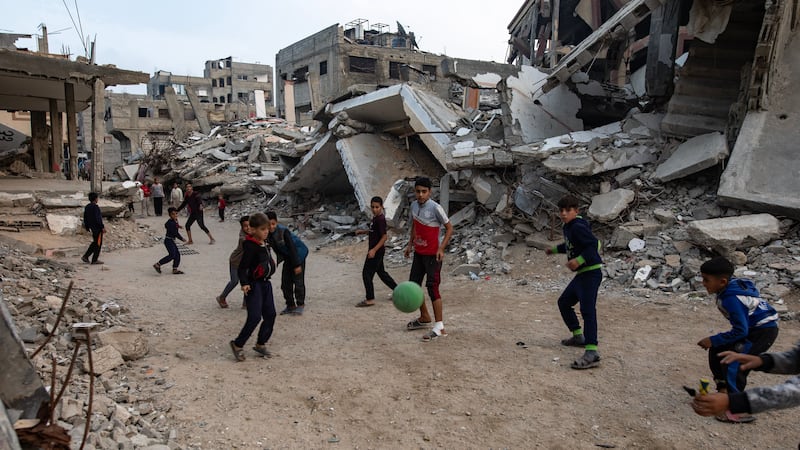A bursary scheme to allow Irish university students to research Ireland’s involvement in the first World War
was announced yesterday by Minister for Arts, Heritage and the Gaeltacht Heather Humphreys in the Flemish town of Ypres, as representatives of more than 80 countries gathered in Flanders to commemorate the war.
The scheme, which will begin next year and run until 2018, will allow five university students from Ireland to spend the summer months at the In Flanders Fields Museum in Ypres. Students will be tasked with expanding the digital archive begun by Google and the Department of Foreign Affairs earlier this year, which lists some 49,000 Irish soldiers who died during the first World War.
The project, based at the In Flanders Fields Museum, is a digital version of the Irish War Memorial Records, a written register of some 49,000 soldiers compiled in 1922 by then Lord Lieutenant of Ireland Sir John French. A copy of the eight-volume, leather-bound work, illustrated by Harry Clarke, is housed today at the museum in Ypres, the medieval town which found itself at the centre of the western front during the first World War.
Piet Chielens, director of the museum, said that, by its nature, the original list of Irishmen who lost their lives in the war was limited: "At the time these books were made, they did not have all the information. These were very difficult times for Ireland. Sir John French ordered that all Irish regiments be included, and all British regiments which are likely to have a lot of Irish-born soldiers in their ranks. They never looked into the navy, the artillery, where there were a lot of Irish. We are now also discovering that Canadian and Australian battalions would have had a lot of Irish."
Irish Ambassador to Belgium Éamonn MacAodha said the idea behind the bursary scheme was to encourage Irish students to spend time expanding and correcting the archive. “In proposing the scheme the aim was to bring the history of the first World War closer to Ireland,” he said.
Irish combatants
Some 200,000 Irish men are estimated to have fought in the war, many of whom are buried in the cemeteries surrounding Ypres, including Tyne Cot cemetery 10km east of the town near Paschendaele.
Speaking at the launch of the expanded Google archive service yesterday, Ms Humphreys said the project was a “tremendous resource” which will help improve knowledge about Ireland’s involvement in the first World War. “It’s important that we commemorate the Irish men who died. Regardless of whether they were British or Irish, or regardless of religion, the same bombs, the same bullets hit them here where we are. It’s the human dimension we should remember.”
Google also unveiled an enhanced version of its digital archive – a digital “exhibition” or “cultural institute” commemorating Irish involvement. Researchers have called on people with information on relatives who died in the first World War to contact the project at Kenniscentrum@ieper.be.
The Google archive is at google.com/culturalinstitute/home.

















